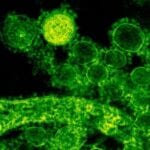 In a paper published this week in Nature, collaborators led by the Erasmus Medical Centre in the Netherlands identify the molecule that has allowed a novel coronavirus to infect at least 15 people, killing nine, since its detection last year.
In a paper published this week in Nature, collaborators led by the Erasmus Medical Centre in the Netherlands identify the molecule that has allowed a novel coronavirus to infect at least 15 people, killing nine, since its detection last year.
The pivotal discovery opens opportunities to study the virus’s origin, the level of risk it poses and potential drugs and vaccines.
To jump to humans, animal viruses must evolve to be able to latch onto proteins on the surfaces of human cells. The researchers identified DPP4, a well-known receptor protein in humans, as the gateway to infection for the new coronavirus.
The nature of the DPP4 protein means that the virus could remain a persistent threat, according to Nature. “The receptor protein is present in very similar versions in many mammals, including bats, non-human primates, and various domestic animals,” states the journal. “The virus might therefore easily jump between species, and humans might continue to be reinfected from a potentially wide range of animal reservoirs.”
Read more at Nature: Receptor for new coronavirus found
Image credit: Elizabeth R. Fischer, Rocky Mountain Labs/NIAID/NIH

